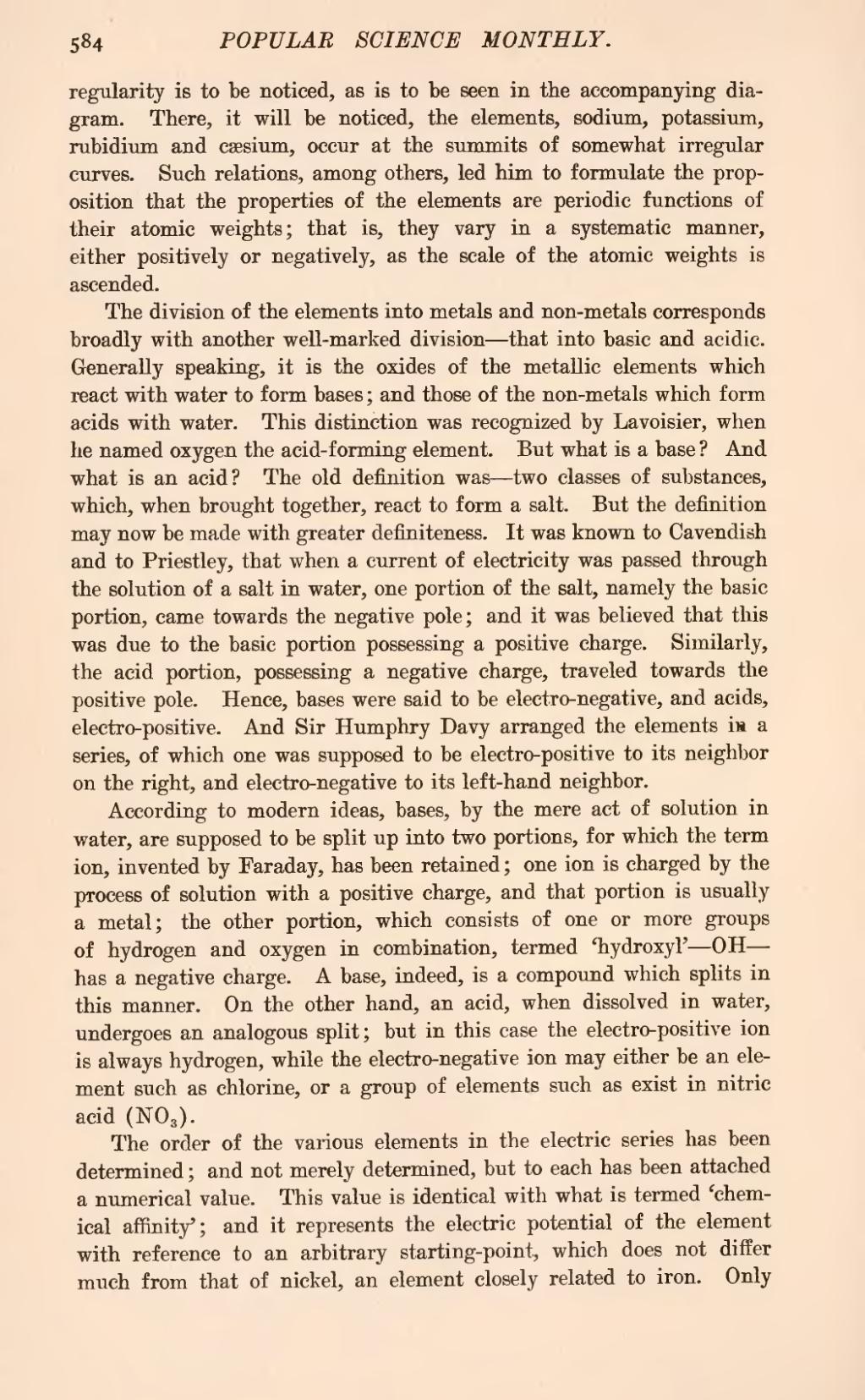regularity is to be noticed, as is to be seen in the accompanying diagram. There, it will be noticed, the elements, sodium, potassium, rubidium and cesium, occur at the summits of somewhat irregular curves. Such relations, among others, led him to formulate the proposition that the properties of the elements are periodic functions of their atomic weights; that is, they vary in a systematic manner, either positively or negatively, as the scale of the atomic weights is ascended.
The division of the elements into metals and non-metals corresponds broadly with another well-marked division—that into basic and acidic. Generally speaking, it is the oxides of the metallic elements which react with water to form bases; and those of the non-metals which form acids with water. This distinction was recognized by Lavoisier, when he named oxygen the acid-forming element. But what is a base? And what is an acid? The old definition was—two classes of substances, which, when brought together, react to form a salt. But the definition may now be made with greater definiteness. It was known to Cavendish and to Priestley, that when a current of electricity was passed through the solution of a salt in water, one portion of the salt, namely the basic portion, came towards the negative pole; and it was believed that this was due to the basic portion possessing a positive charge. Similarly, the acid portion, possessing a negative charge, traveled towards the positive pole. Hence, bases were said to be electro-negative, and acids, electro-positive. And Sir Humphry Davy arranged the elements m a series, of which one was supposed to be electro-positive to its neighbor on the right, and electro-negative to its left-hand neighbor.
According to modern ideas, bases, by the mere act of solution in water, are supposed to be split up into two portions, for which the term ion, invented by Faraday, has been retained; one ion is charged by the process of solution with a positive charge, and that portion is usually a metal; the other portion, which consists of one or more groups of hydrogen and oxygen in combination, termed 'hydroxyl'—OH—has a negative charge. A base, indeed, is a compound which splits in this manner. On the other hand, an acid, when dissolved in water, undergoes an analogous split; but in this case the electro-positive ion is always hydrogen, while the electro-negative ion may either be an element such as chlorine, or a group of elements such as exist in nitric acid (NO3).
The order of the various elements in the electric series has been determined; and not merely determined, but to each has been attached a numerical value. This value is identical with what is termed 'chemical affinity'; and it represents the electric potential of the element with reference to an arbitrary starting-point, which does not differ much from that of nickel, an element closely related to iron. Only
